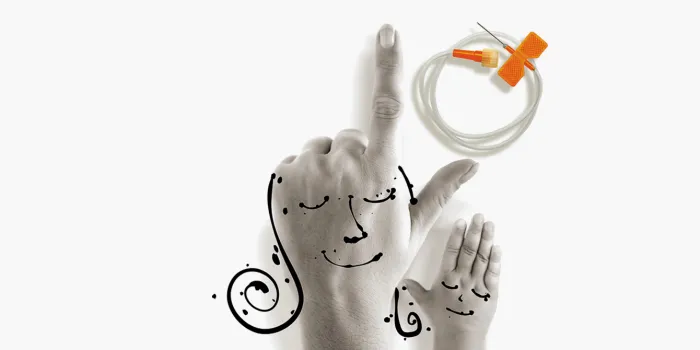Many young children are afraid of needles, and many parents may have anxiety about giving their child infusions, especially in the beginning and when a child needs infusions several times a week. Fortunately, there are strategies to make the experience less stressful for all involved.
Here, experts share four ways to combat needle nervousness.
Demystify
Getting anxious about needle pokes can actually cause the veins to constrict, making the infusion process even harder, says Christi Humphrey, LCSW, a social worker at Hemophilia of Georgia. Educating your child about the process and why it’s necessary can make infusions less intimidating.
“I suggest that parents talk about hemophilia throughout their week, not just at infusion time,” Humphrey says. “Talking about the condition normalizes it. Families can also write their own story and ask the children to draw pictures about the infusion process. The more families are open to discussing hemophilia, what it looks like, and how it makes you feel, the less a child has a stress response to the condition.”
Practice
Jim Munn, RN, MS, program coordinator at the University of Michigan Hemophilia and Coagulation Disorders Program, stresses the value of hands-on experience for both kids and their parents. “Start to involve kids early in the process with having them assist with getting things ready for infusions, helping with pushing the medication into the vein once accessed, and completing the documentation of the infusion,” he says.
Practicing giving needle pokes is especially important, says Carrie Starnes, a child life specialist at the Indiana Hemophilia and Thrombosis Center. She suggests using actual medical equipment — a tourniquet, alcohol pads, pressure dressings, and a butterfly or syringe without
a needle — on a stuffed animal or doll. “This helps educate a child about the sights, sounds and sequence of the procedure.”
Distract
Find things that your child can do during the infusion process to keep their mind off it. “Distraction can be a very powerful tool for children and adults as well,” Starnes says. “If you can find something that your child likes and will engage in, then use it.” She recommends blowing bubbles, counting, watching a video or playing games on a tablet device.
Physical interventions such as numbing creams, cold sprays and a product called Buzzy, a small vibrating device that helps reduce pain with infusions, are also useful.
Calm
Maintaining a calm environment during the infusion process helps reduce stress and relax the body. You might dim the lights and reduce noise in the room if your child finds that comforting, for example. A warm blanket and warm drink might also be helpful.
Humphrey also recommends using mindfulness techniques, such as imagining a favorite place or focusing on a mantra. “These all help to address the in-the-moment stress response to needles,” she says.
Learn More: For more tips on infusion, visit Steps for Living.

